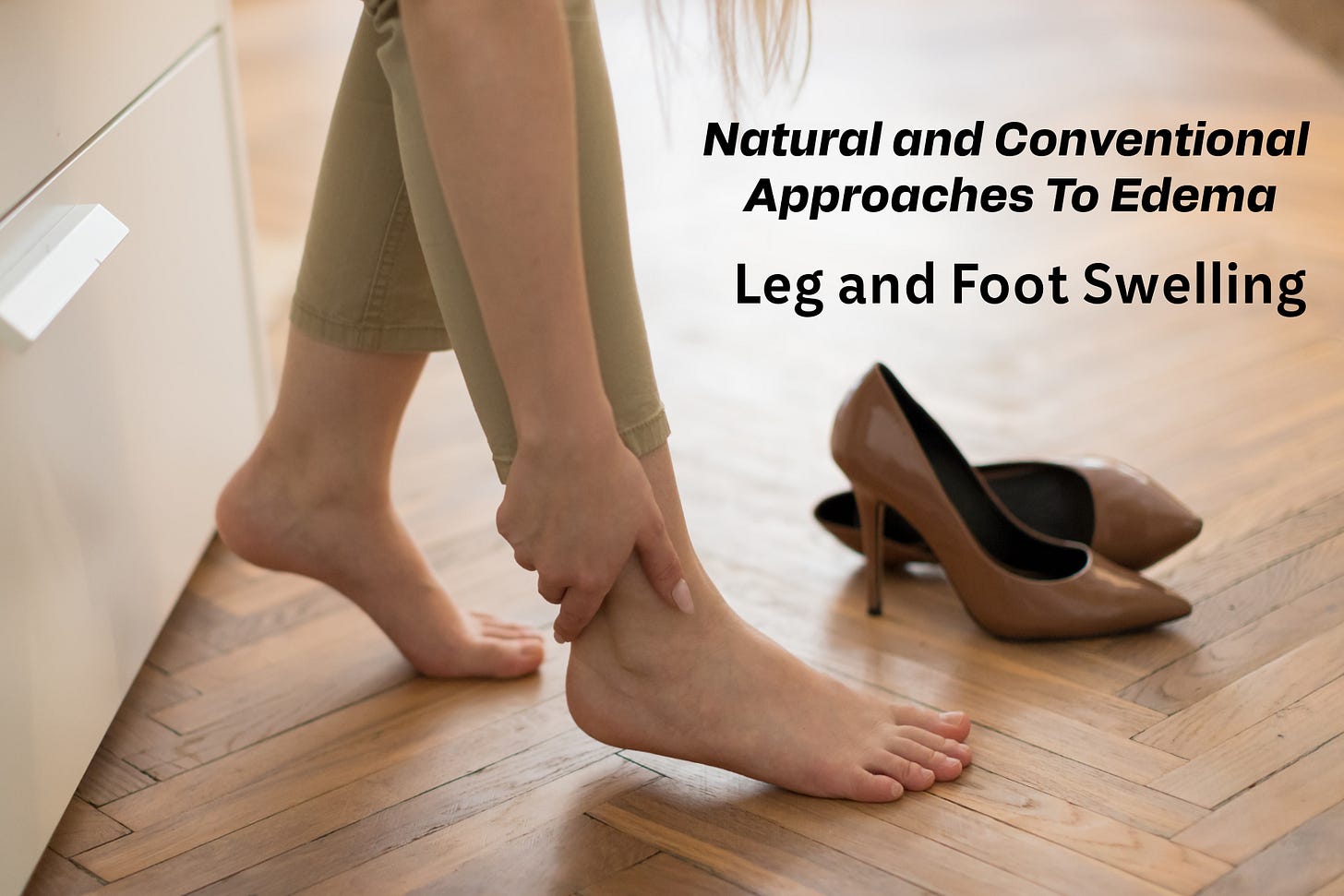Natural & Conventional Approaches to Edema Leg & Foot Swelling
By Dr. C.M. Curtis
05/03/2025
Many people have experienced that uncomfortable sensation of swollen feet and ankles after a long day of standing or during hot summer months. While occasional swelling may be harmless, persistent edema in the lower extremities can signal underlying health concerns that need attention. This article explores the causes of leg and foot edema, compares unilateral versus bilateral swelling, and examines both conventional medical and evidence-based natural approaches to managing this common condition.
What Is Edema?
Edema occurs when excess fluid accumulates in body tissues, causing swelling. This often happens in the legs and feet because gravity pulls fluid downward, especially when circulation is compromised. The swelling may be accompanied by stretched or shiny skin, discomfort, reduced mobility, and in some cases, pitting (when pressure on the swollen area leaves an indentation).
Unilateral vs. Bilateral Edema: What's the Difference?
Understanding whether swelling affects one limb (unilateral) or both (bilateral) provides important diagnostic clues:
Unilateral Edema (affecting one leg or foot) often suggests:
Deep vein thrombosis (blood clot)
Lymphatic obstruction
Cellulitis (skin infection)
Injury or trauma
Previous surgery or radiation to the affected area
Knee or ankle arthritis
Bilateral Edema (affecting both legs or feet) typically indicates:
Systemic conditions like heart failure, kidney disease, or liver problems
Medication side effects
Pregnancy
Prolonged standing or sitting
Venous insufficiency
Nutritional deficiencies
Hormonal changes
Important note: Sudden unilateral swelling, especially with pain, warmth, or redness, requires immediate medical attention as it may indicate a blood clot.
When a patient presents with edema, health care providers (natural and conventional) typically:
Conduct a physical examination and medical history review
Order diagnostic tests such as:
Blood tests to assess kidney, liver, and heart function
Urinalysis to check for protein in urine
Imaging studies (ultrasound, CT scan, MRI) are performed if a blood clot is suspected
An echocardiogram is recommended if heart failure is suspected
Conventional Medical Approach
Prescribe medications including:
Diuretics (water pills) like furosemide (Lasix), hydrochlorothiazide, or spironolactone to increase urination and reduce fluid retention
Blood thinners if a clot is present
Treatment for underlying conditions, such as heart failure medications
Recommend lifestyle changes such as:
Reducing salt intake
Elevating legs
Using compression stockings
Weight loss if appropriate
Pros of the conventional approach:
Rapid symptom relief with prescription diuretics
Comprehensive diagnostic testing can identify serious underlying causes
Medical interventions may be life-saving for conditions like heart failure or blood clots
Cons of the conventional approach:
Often focuses on symptom management rather than addressing root causes
Diuretics can cause side effects, including electrolyte imbalances, dehydration, dizziness, and increased urination
Some diuretics deplete potassium and other minerals
Limited attention to nutritional factors that may contribute to edema
Natural Approach to Edema
The natural approach addresses underlying causes while supporting the body's natural fluid balance mechanisms. This approach is evidence-based and can complement conventional care.
Dietary Modifications
Anti-Inflammatory Diet: Emphasizing whole foods, especially those rich in




